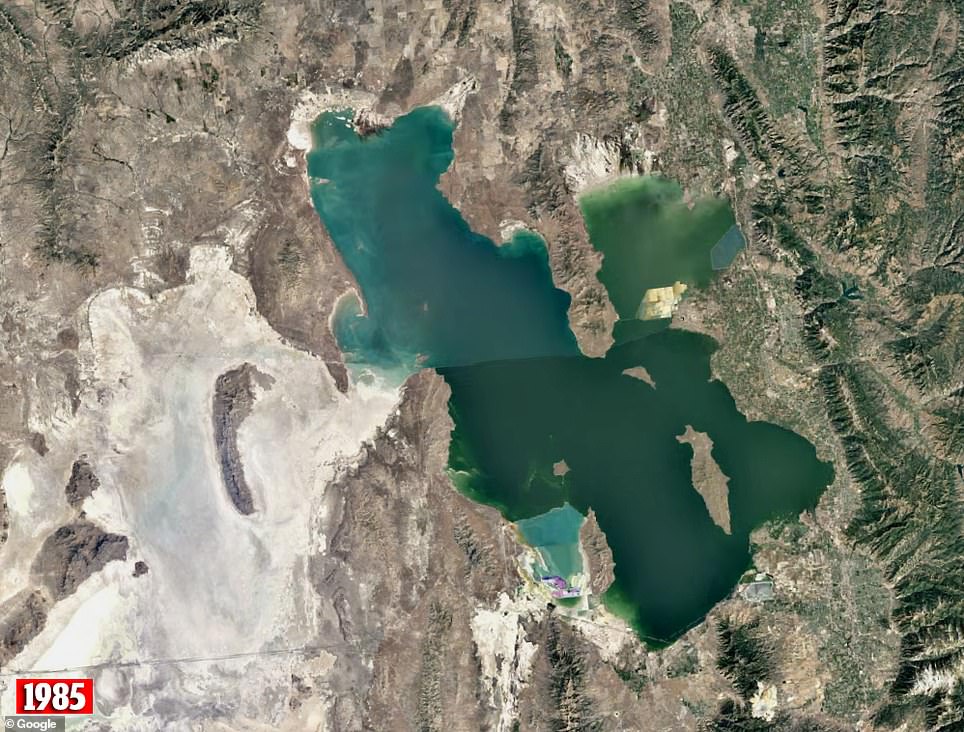Great Salt Lake is set to DISAPPEAR within five years due to ongoing ‘megadrought’
>
Utah’s Great Salt Lake will be gone within five years if left alone as an ongoing mega-drought and a lack of replenishment has left water levels plummeting 73 percent.
A coalition of dozens of scientists has called on the state to enact “emergency measures” to save the Great Salt Lake, warning that unless it sees a “dramatic increase” in inflow within a year, the lake will be gone by 2028.
In their report calling for a ransom, the scientists say the “disappearance of the lake could cause immense harm to Utah’s public health, environment and economy.”
“The decisions we make in the coming months will affect our state and ecosystems throughout the West for decades to come.”
The dire warning comes after the driest summer on record caused water levels in the lake to hit record lows amid a mega-drought that devastated the West.
Scientists have warned that Utah’s Great Salt Lake will disappear in five years as water levels have dropped 73 percent.
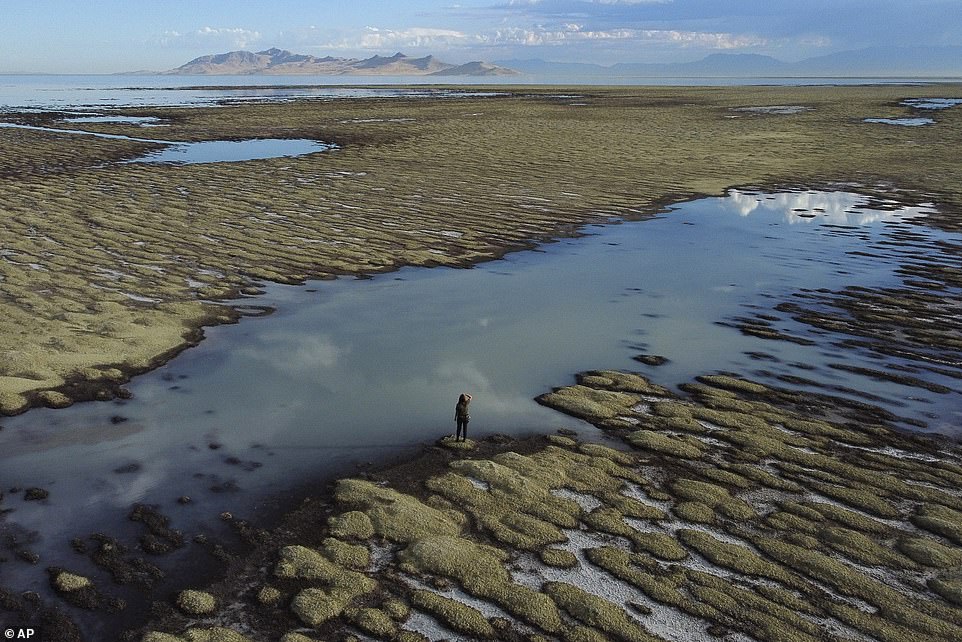

Record low water levels have left 60 percent of the lake bed exposed in the midst of a mega-drought in the west.
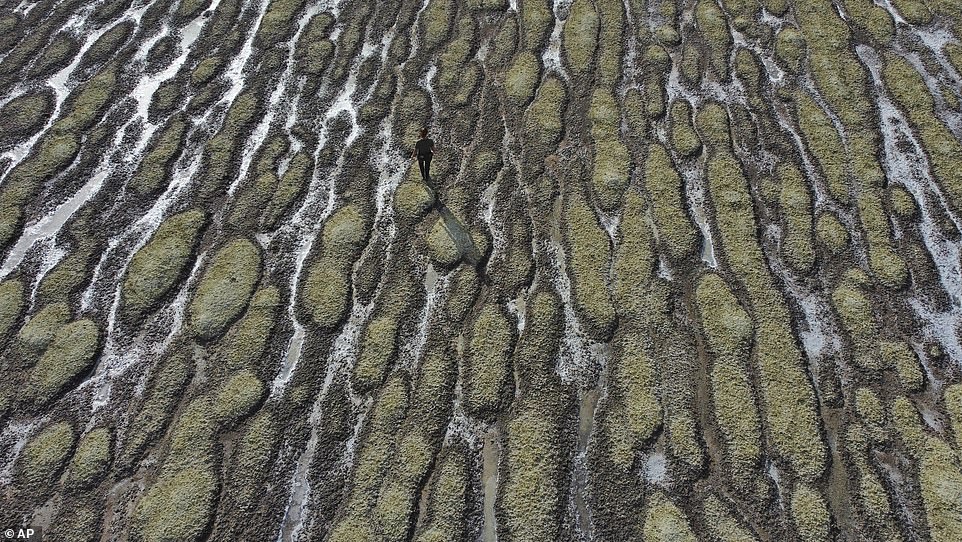

The researchers said the lake will need 1 million acre-feet of water, or about 326,000 gallons, per year to reverse receding water levels. Pictured: A Utah Department of Natural Resources ranger walking in exposed areas of the lake
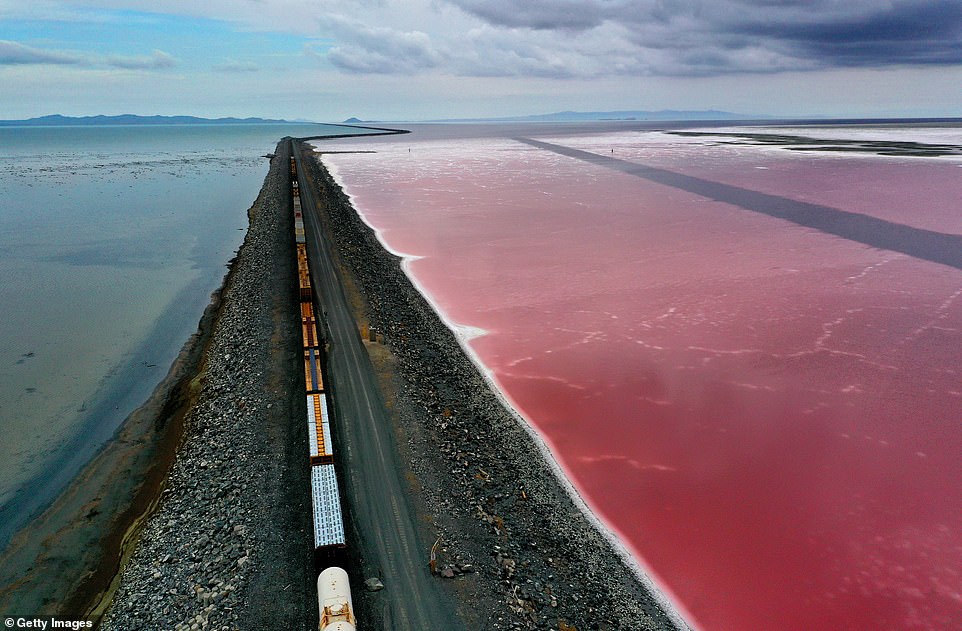

The Great Salt Lake is known as the Red Sea of America. Pictured: The dividing line between the lake’s red and blue water in 2021. The summer of 2022 was the hottest and driest in the area, causing water levels to continue to drop.
According to the report, the Great Salt Lake has lost 73 percent of its water, with the lake now 19 feet below its average level, as 60 percent of the lake bed is exposed.
Because the lake is shallow, around 35 feet at its deepest point, less water quickly translates to receding shorelines.
Further exposure of the dry lake bed could also send arsenic-laced dust into the air that millions breathe. Breathing high levels of arsenic can cause a sore throat, irritated lungs, arsenic poisoning, or even death, according to the American Cancer Society.
Scientists said the lake will need an additional 1 million acre-feet of water, or about 326,000 gallons, per year to reverse the depression.
To speed up the rescue, investigators are calling on Utah Governor Spencer Cox to declare a state of emergency. They are also urging lawmakers to implement an emergency water conservation measure.
The scientists warned that if the drought plaguing the west persists, which experts say it will, saving the lake would require water use cuts of up to 50 percent in the Great Salt Lake basin area.
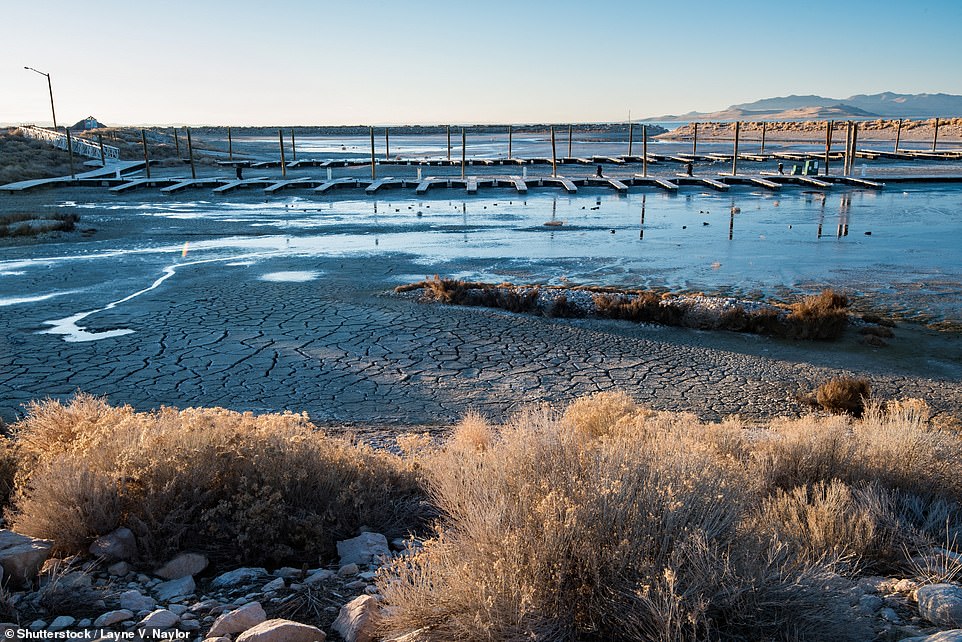

Pictured: Dry lakebed along an abandoned docking area on the Great Salt Lake in spring 2022


A chair was placed along the southern shore of the lake in March as water levels continued to recede.
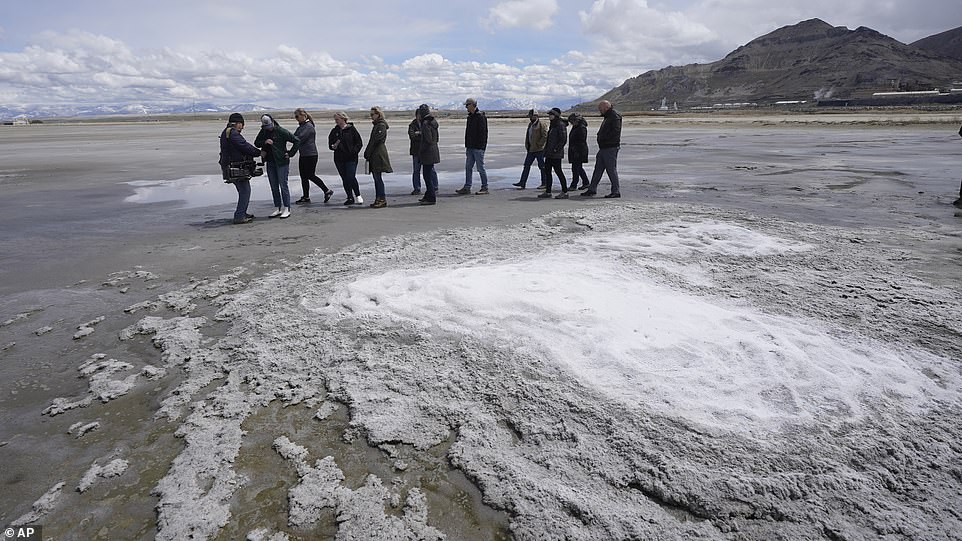

Pictured: Utah legislators and DNR chiefs walk past a Mirabilite spring while surveying the lake in May.
The report’s lead author, Benjamin Abbott, a professor of ecology at Brigham Young University, said CNN that the state of the lake today is shocking.
‘Honestly, it’s amazing and totally disarming to see how much of the lake is gone. The lake is mostly lake bed at this time.
The receding waters are already affecting natural wildlife, exposing the nesting ground for pelicans, which are among the many bird species that depend on the lake.
Jaimi Butler, coordinator of the Great Salt Lake Institute at Westminster College in Salt Lake City, told the Associated Press that pelicans, the largest birds in North America, often flock to Gunnison Island, a remote outpost on the lake.
But falling lake levels have exposed a land bridge to the island, allowing foxes and coyotes to cross and forage for rodents and other food, scaring birds into fleeing their nests and laying eggs on young. for the seagulls to eat them.
Pelicans aren’t the only birds that depend on the Great Salt Lake: It’s a stopover for many species to feed on their journey south.
Brine shrimp in the lake support a $57 million industry in Utah, but in years to come, less water could make the salinity too high even for those creatures to survive.
‘The ecosystem of the lake is not only on the brink of collapse. it is collapsing. ‘
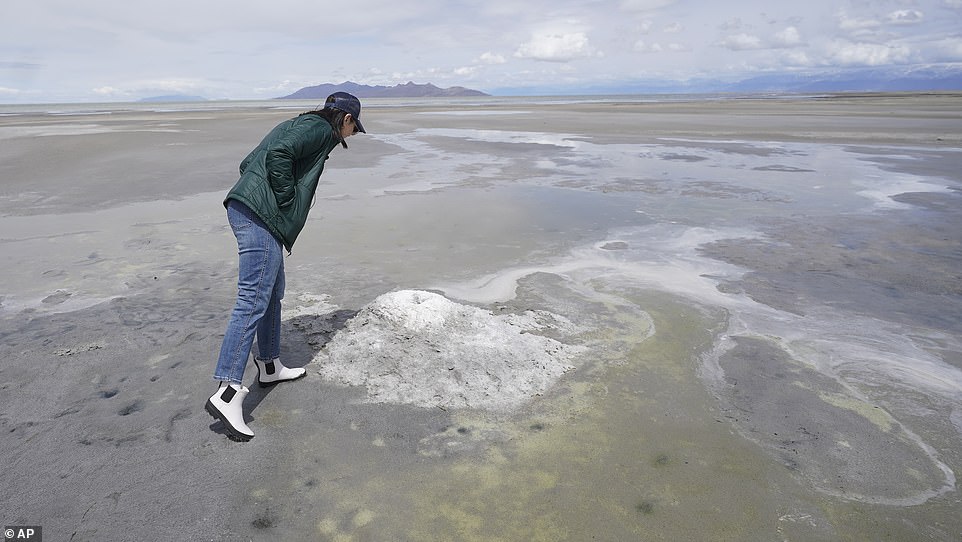

Pictured: Utah Lieutenant Governor Deidre Henderson looks at a mirabilite spring mound as she surveys the Great Salt Lake
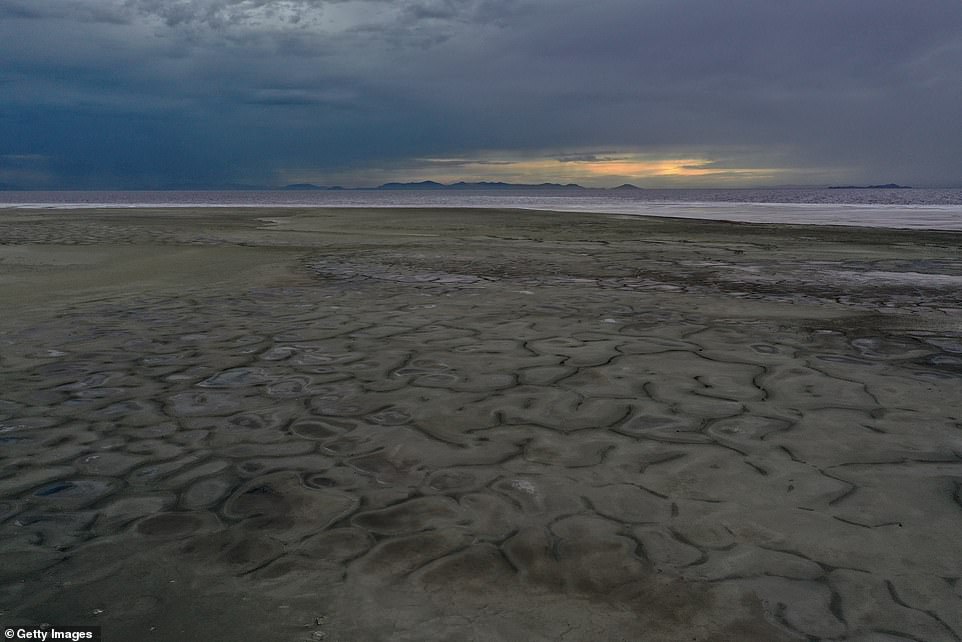

The lowering of the water level threatens to devastate the wildlife in the area, as well as the local shrimp industry.
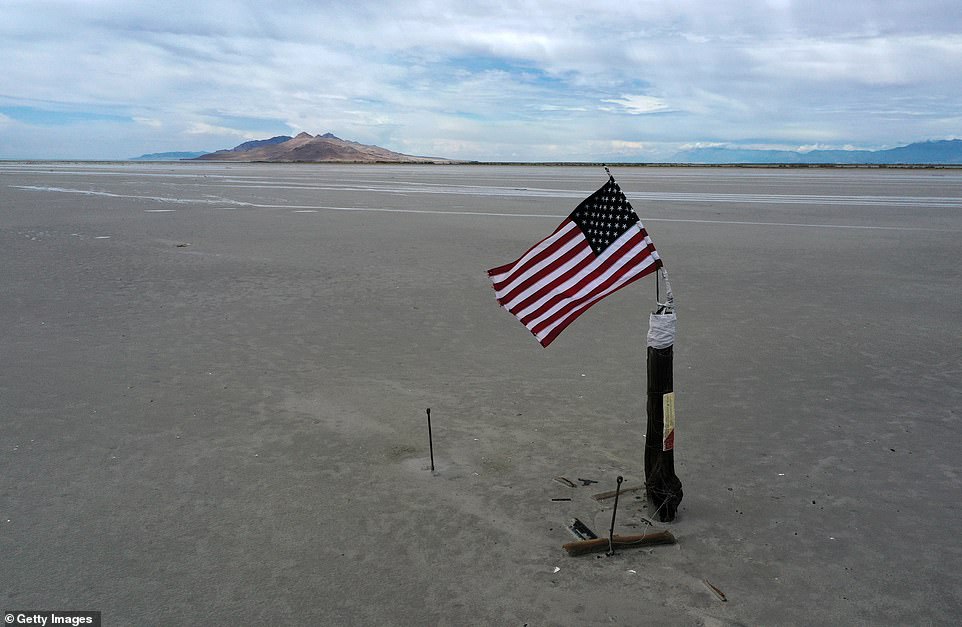

Pictured: An American flag standing in an area of the lake that used to be underwater
Cox, a Republican, has pleaded with people to reduce watering their lawns, as for years residents have been diverting water from rivers that flow into the lake to irrigate crops and supply homes.
The Great Salt Lake is fed by Jordan, Weber, and Bear Eivers, which deposit approximately 1.1 million tons of minerals each year.
The scientists urging the action say the governor has the right approach, echoing that conserving water is the best way to save the lake rather than just building new pipelines to help replenish it.
“We really encourage everyone from an individual water user to the governor’s office to the federal government to focus on conservation,” Abbott told CNN. “That’s the only way we can get enough water to the Great Salt Lake in time to save it.”

